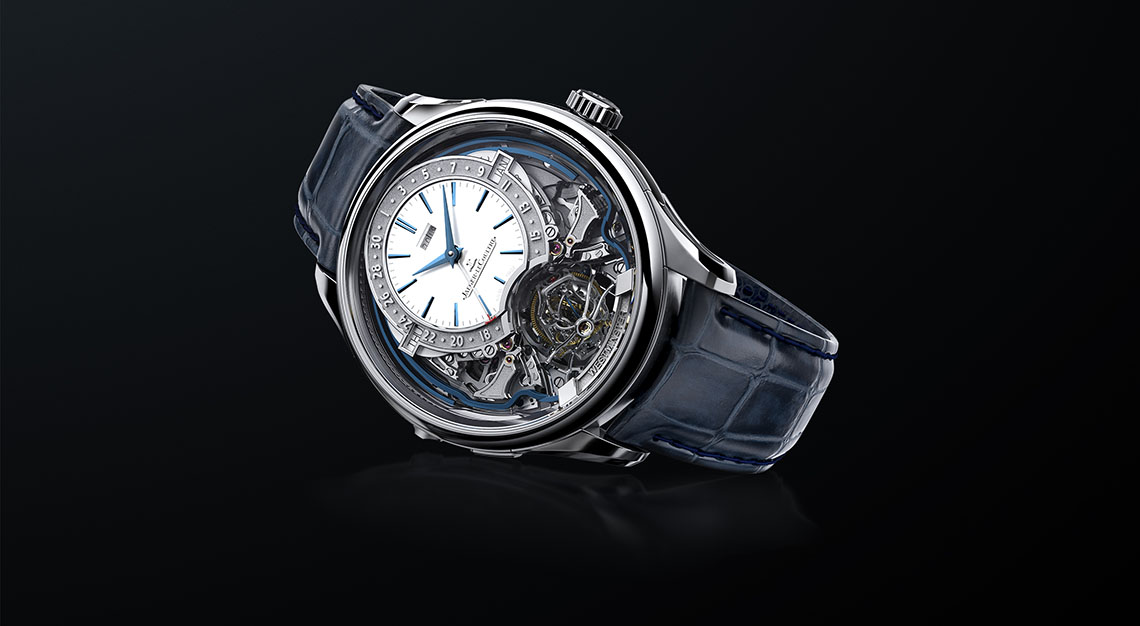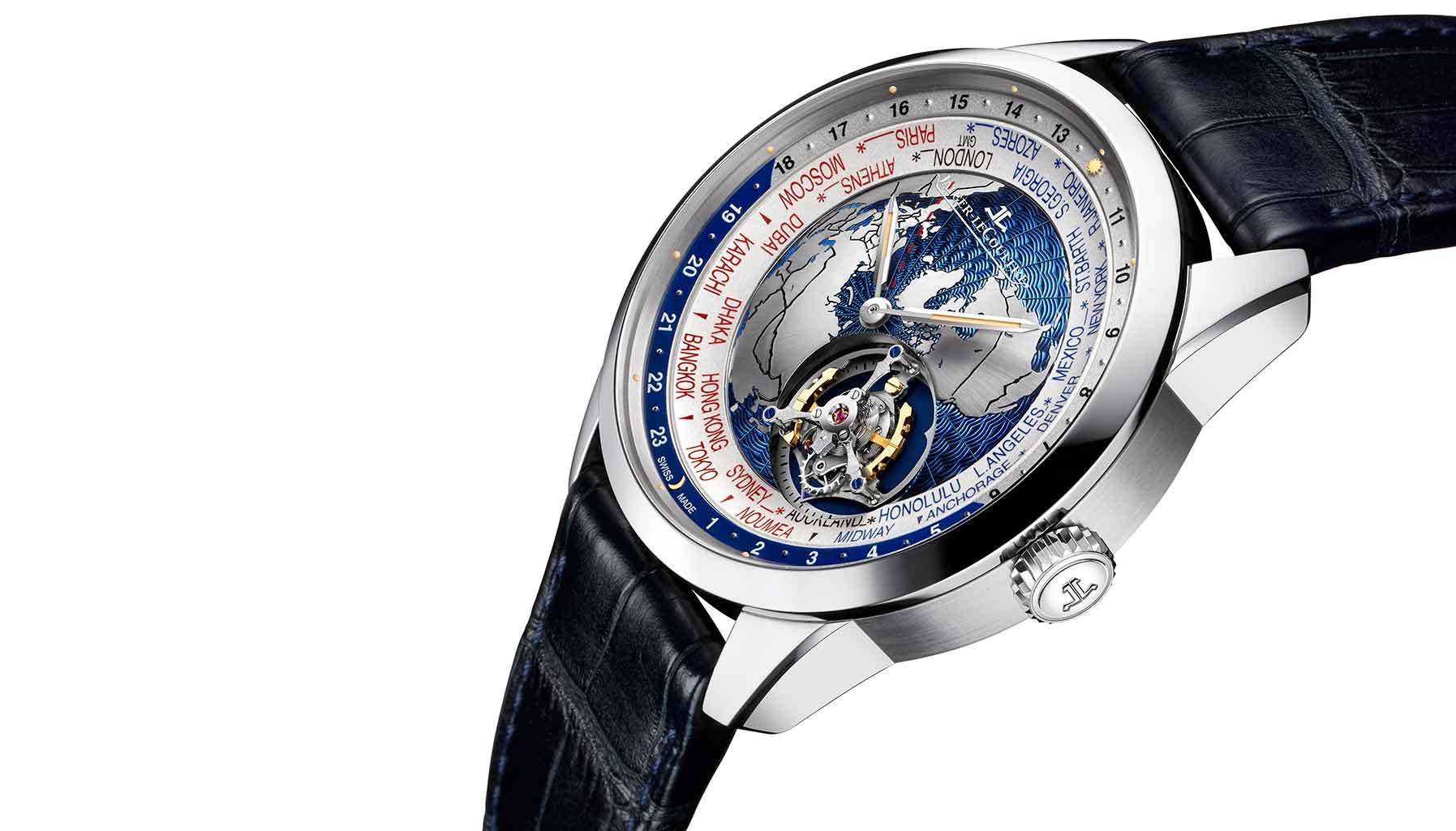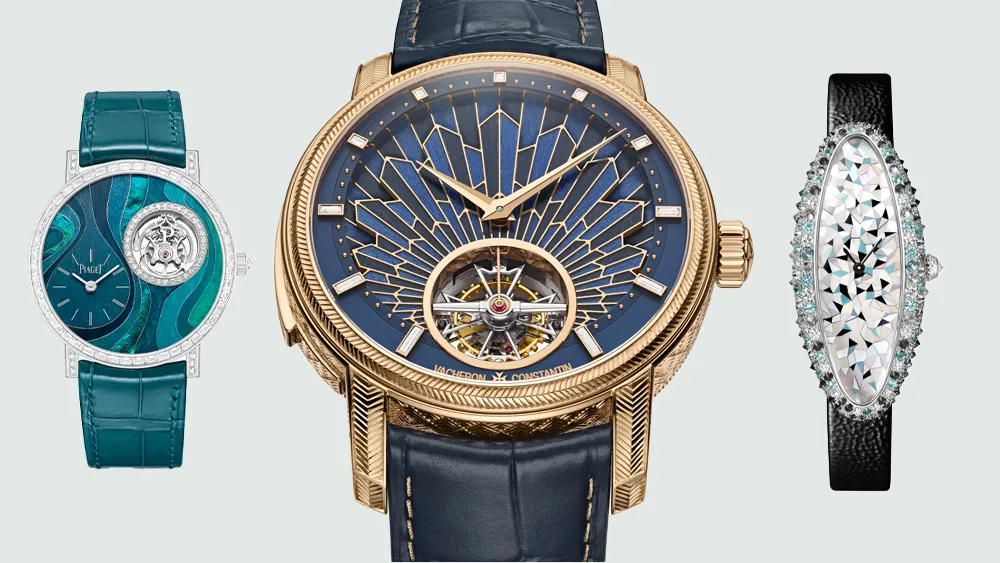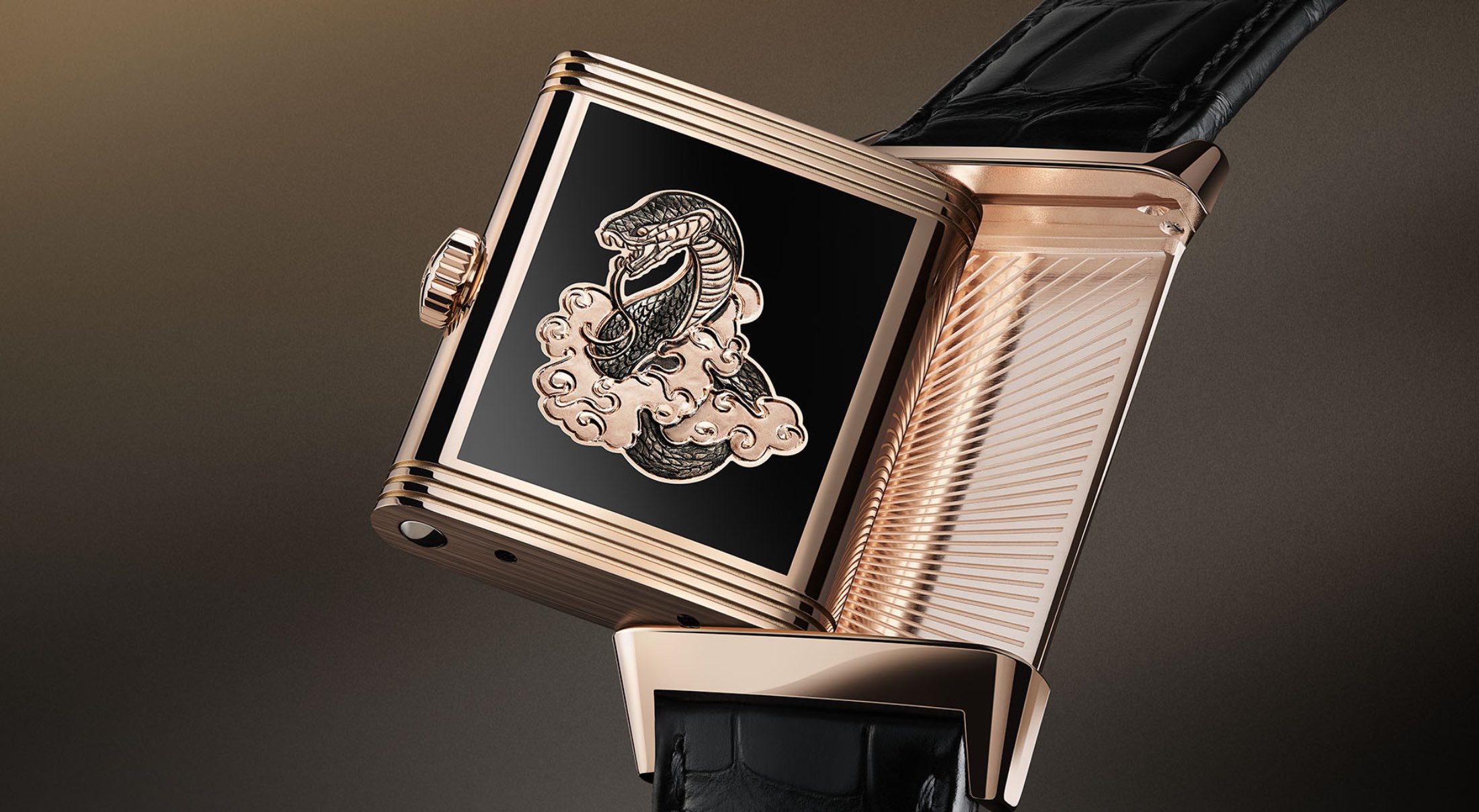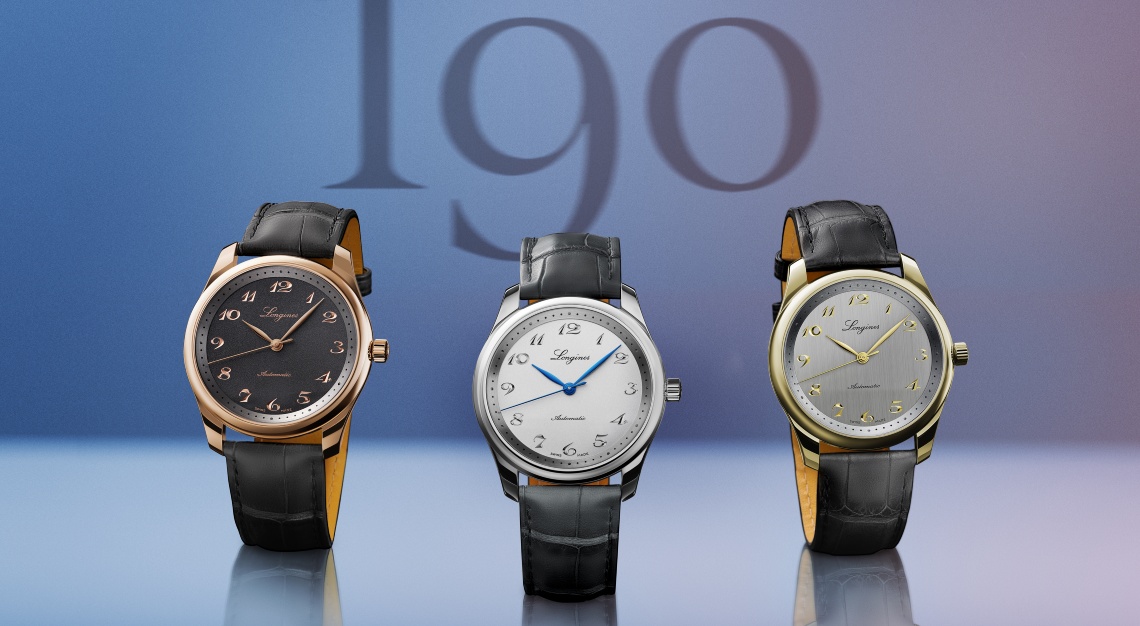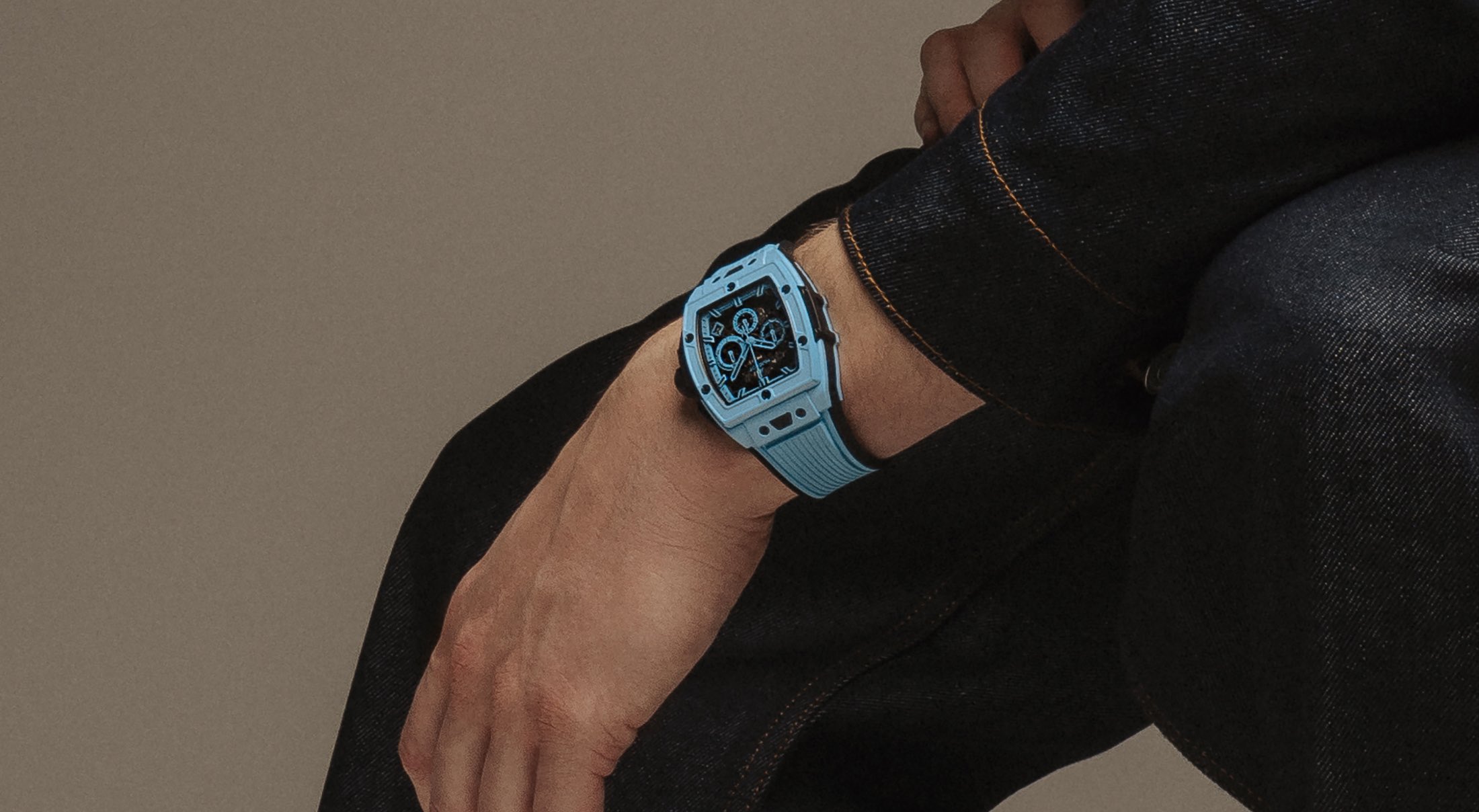Forget thin. Ultra-thin will always be in, especially in the world of luxury timepieces
“You can never be too rich or too thin.”
Wallis Simpson, the Duchess of Windsor, wasn’t referring to fine watchmaking when she uttered her famous quote, but she may as well have been. Ever since the financial crisis of 2008 stoked desire for classic, understated timepieces, watchmakers have done battle to achieve record-breaking slimness. As a result, the category is now bursting with slender styles equipped with wafer-thin movements. Here, we survey the thinnest watches on the market, whose complicated mechanisms make clear that a wristwatch with a low profile can still pack a powerful punch.
New Releases
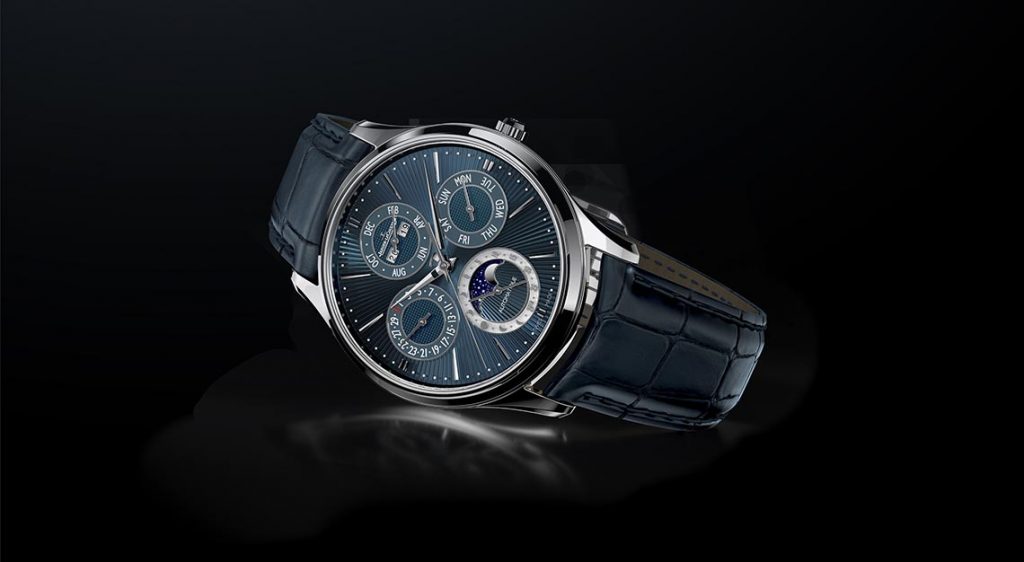
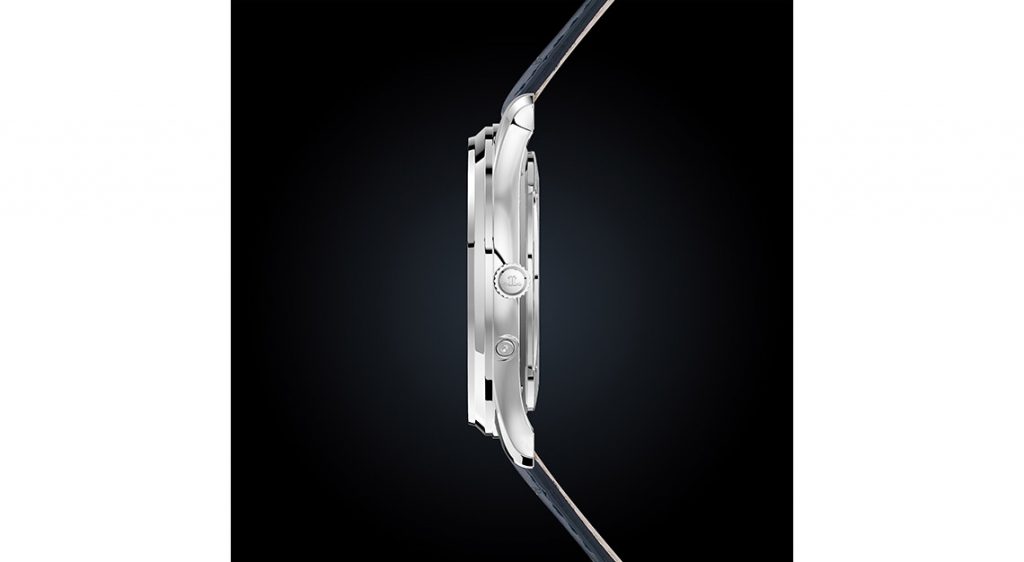
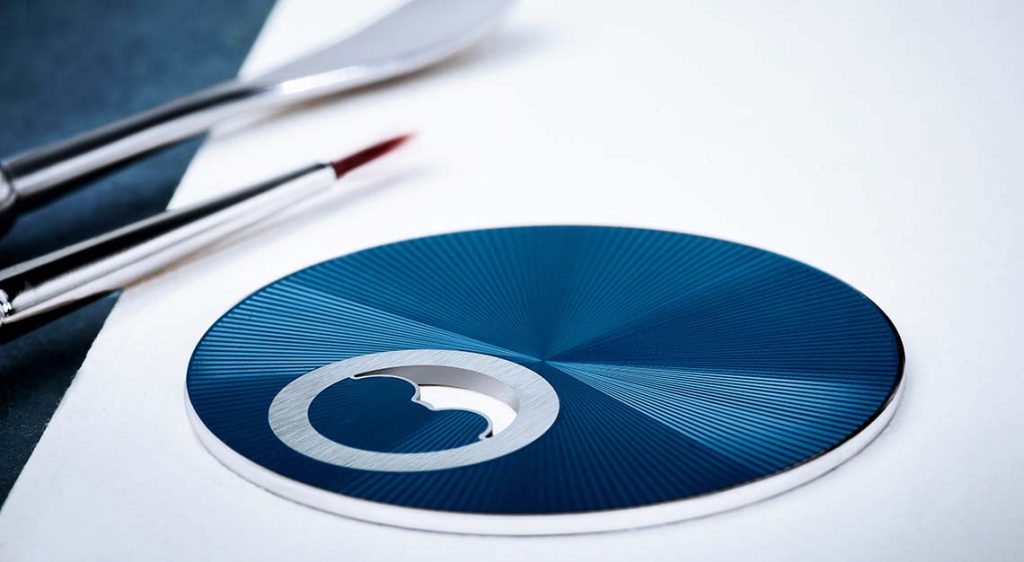
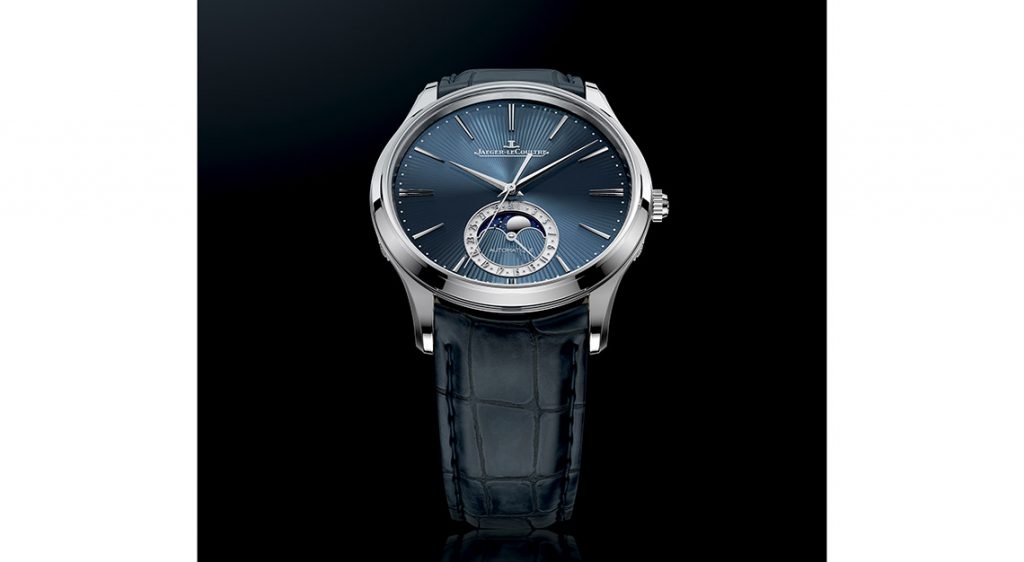
Jaeger-LeCoultre Master Ultra Thin Moon Enamel
Frankly, compared to the whippets mentioned in this article, this timepiece is positively obese with its 10.04mm thick, 18k white gold case. But considering the complication it carries, which requires extra discs to be added for the date and moon phase displays, keeping it no thicker than a centimetre is probably quite a feat. It’s certainly slim enough for Jaeger-LeCoultre, since it’s one of the three novelties the brand has released under its Master Ultra Thin line for this year’s SIHH.
Ticking away inside is the automatic in-house calibre 925/2, an updated version of the existing calibre 925. What the update gives is 70 hours of power reserve – 30 more hours than the older 925 could give – and it manages that with just a single barrel and still keeping a standard frequency of 28,800vph. As its name indicates, the highlight of this piece is the beautiful blue enamel dial, shining with a metallic sheen that’s enhanced by the guilloche sunray pattern, with a 39mm diameter.
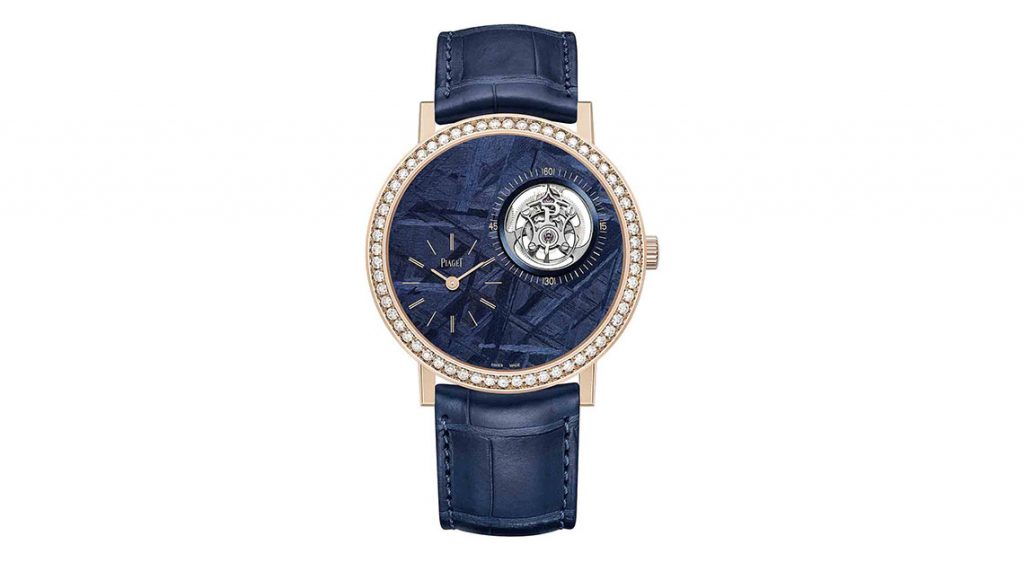
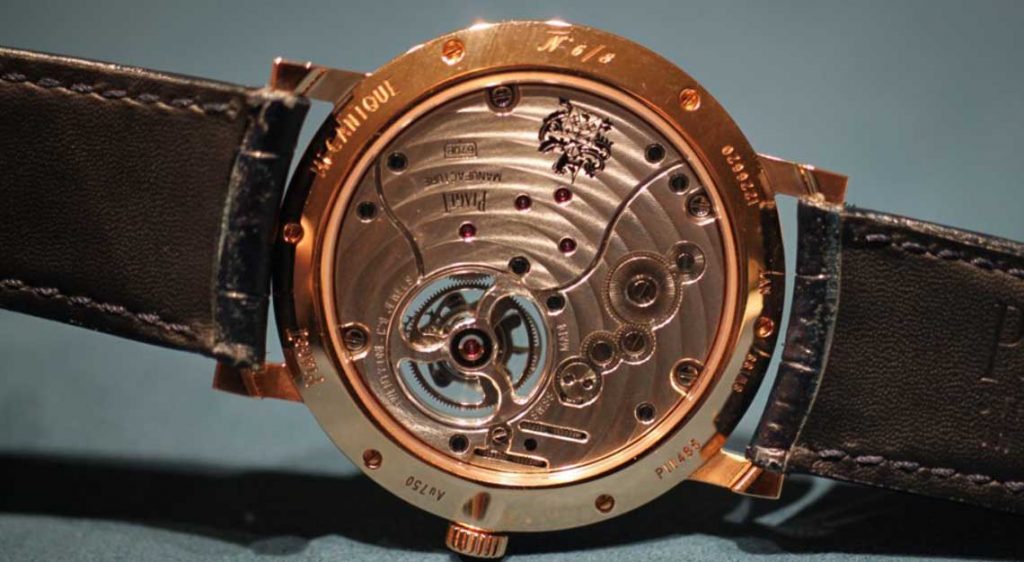
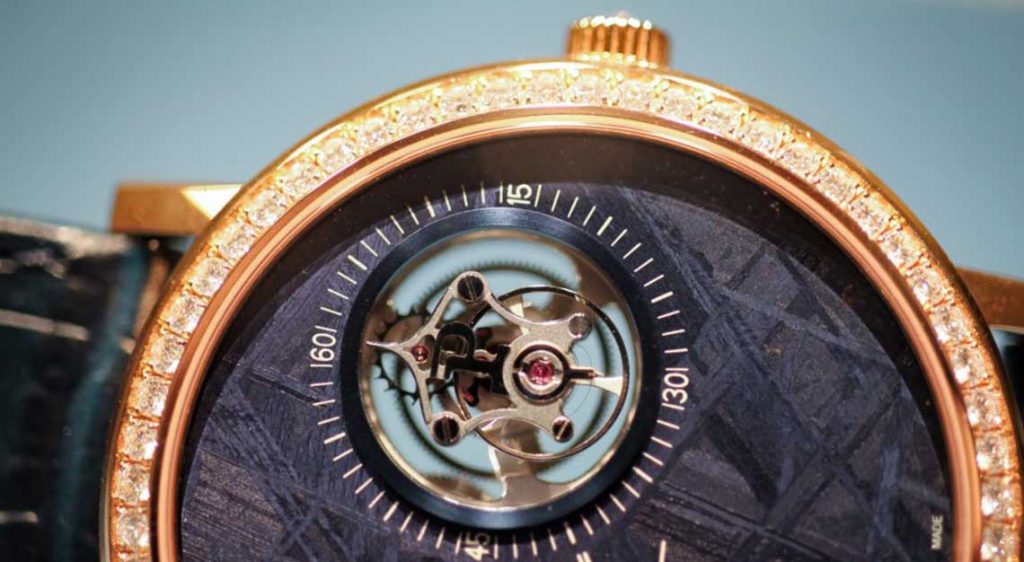
Piaget Altiplano Tourbillon Meteorite
It’s not a true novelty or a record breaker, but the Altiplano Tourbillon Meteorite is Piaget’s ultra-thin complication release at this year’s edition of SIHH. In its essence, it’s simply the Altiplano Tourbillion High Jewellery watch – created in 2017 to celebrate the Altiplano collection’s 60th anniversary – but with some aesthetic changes and less diamonds. As the model’s name indicates, its dial is made of meteorite. Powering the Piaget Altiplano Tourbillon Meteorite is the 670P calibre, which has a height of 4.6mm. With the addition of the case, the overall thickness of the watch measures in at 7.4mm – not a record-breaker by any means, but certainly thin for a tourbillon timepiece, and good enough to belong in the Altiplano collection. Like the Altiplano Ultimate Hand-Wound Watch, the movement components in this piece are arranged on a level plane to keep it slim. The unique layout on the dial, with the time display at eight o’clock and the tourbillon at two, is a result of this arrangement. This 41mm timepiece comes in 18k pink gold and is limited to only 28 pieces worldwide.
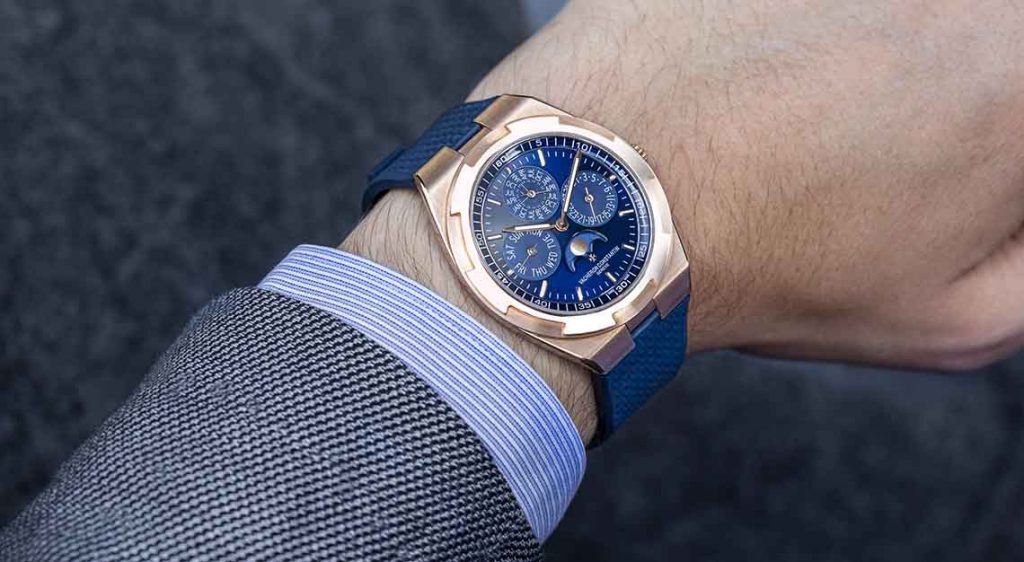
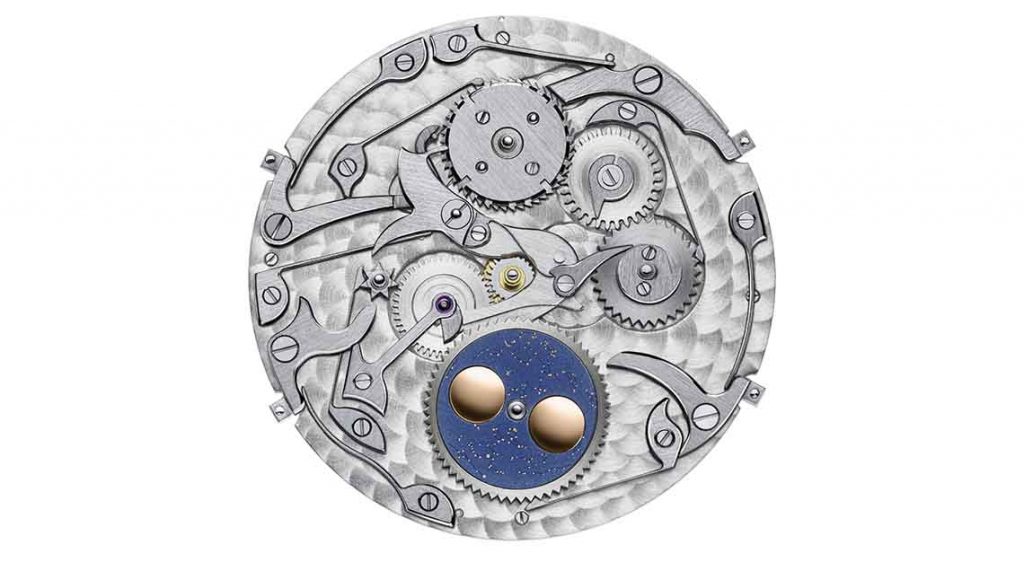
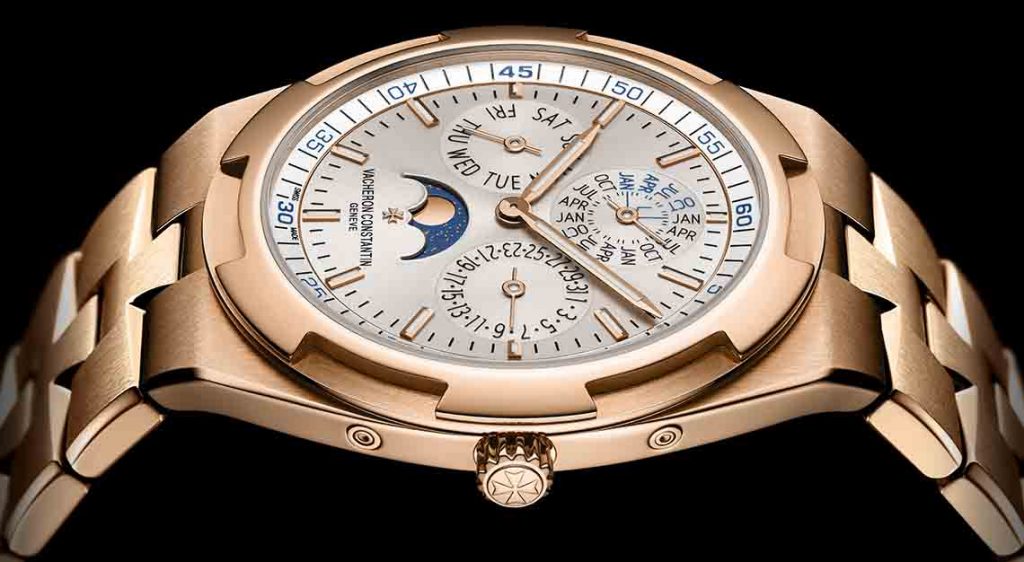
Vacheron Constantin Overseas Perpetual Calendar Ultra-Thin
This timepiece may be an oldie, but it’s also a goodie. The first iteration was launched in 2016 with a slate grey dial and an 18k white gold case. Its “sports luxe” looks proved to be very popular, so Vacheron Constantin added a rose gold version in 2018. This year, model has been further expanded to include one with a bold blue dial and matching rubber strap, as well as one with a silver dial with a full rose gold bracelet strap.
The version with the blue dial looks particularly modern; the unexpected pairing of a blue dial and blue rubber strap with the watch’s otherwise staid rose gold case gives it a much more casual vibe. As with many Overseas models, the straps on this piece are easily interchangeable with other watches in the line. Powering the timepiece is the 1120 QP/1 automatic movement, which was developed in-house, but made by Audemars Piguet. The movement itself measures a very slim 4.05mm but the entire watch, case and all, adds up to 8.1mm. The timepiece has a power reserve of 40 hours and a 29.6mm diameter.
Existing Record Holders
https://www.instagram.com/p/BgqVBxjjoHp/?utm_source=ig_embed
Bulgari Octo Finissimo Minute Repeater
The rules of physics tell us that ultra-thin minute repeaters shouldn’t work; traditionally, minute repeaters relied on having spacious cases for good resonance. But Bulgari ingeniously worked its way around the limits of a slim case with indexes that are cut out in the dial, so that the sound can better escape. Its BVL calibre 362 is only 3.12mm thick; the slimness was achieved by using a flat balance spring, and removing the bridges of the crown wheel and mainspring barrel. The watch measures 40mm in diameter and has a 42-hour power reserve. When it first launched in 2016, it came in a titanium case and was limited to 50 pieces. A version with a carbon case was added in 2018, also limited to 50 pieces. Additionally, to hold this record, Bulgari had to dethrone yet another timepiece: Vacheron Constantin’s Patrimony Contemporaine Ultra-Thin Calibre 1731.
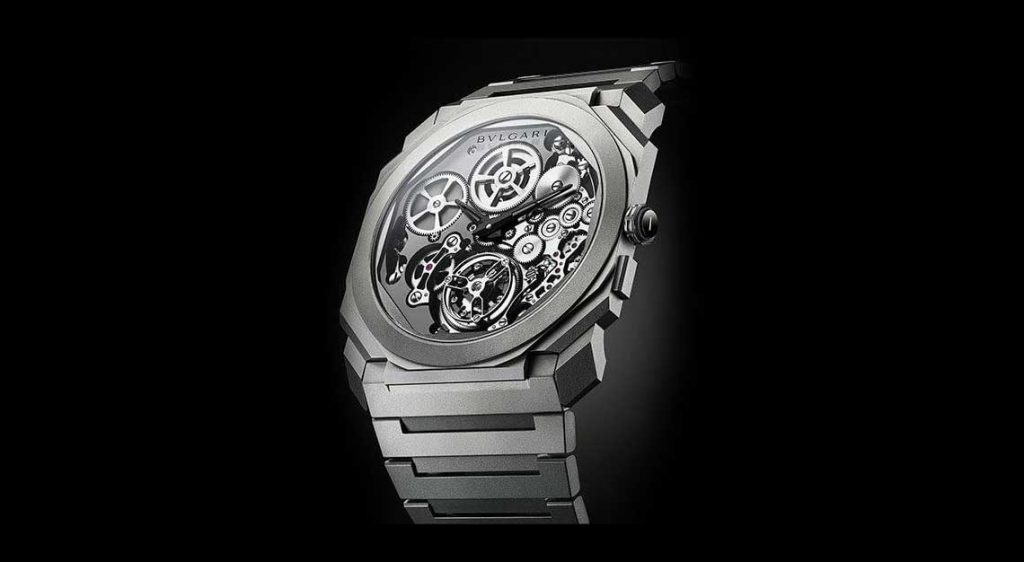
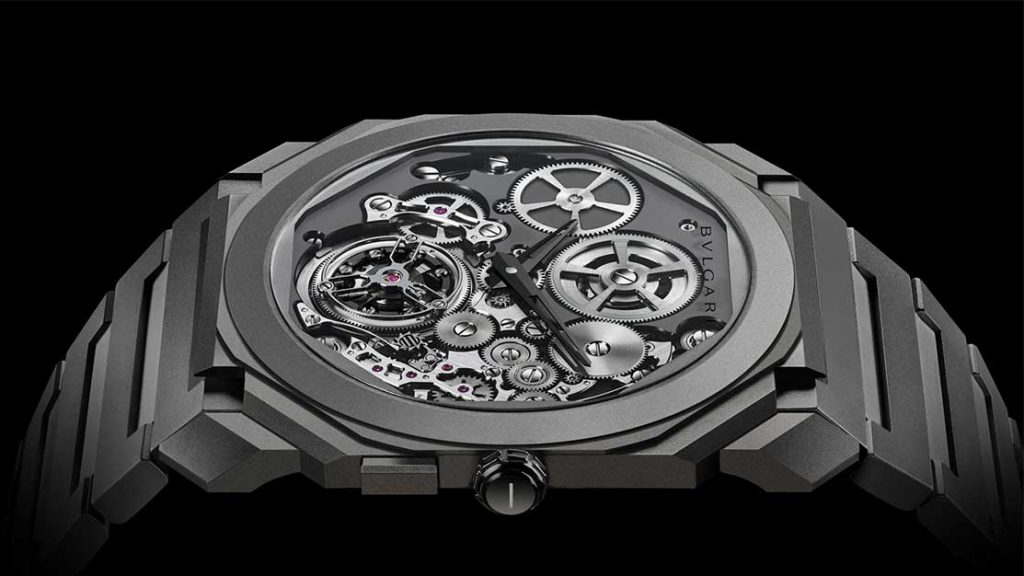
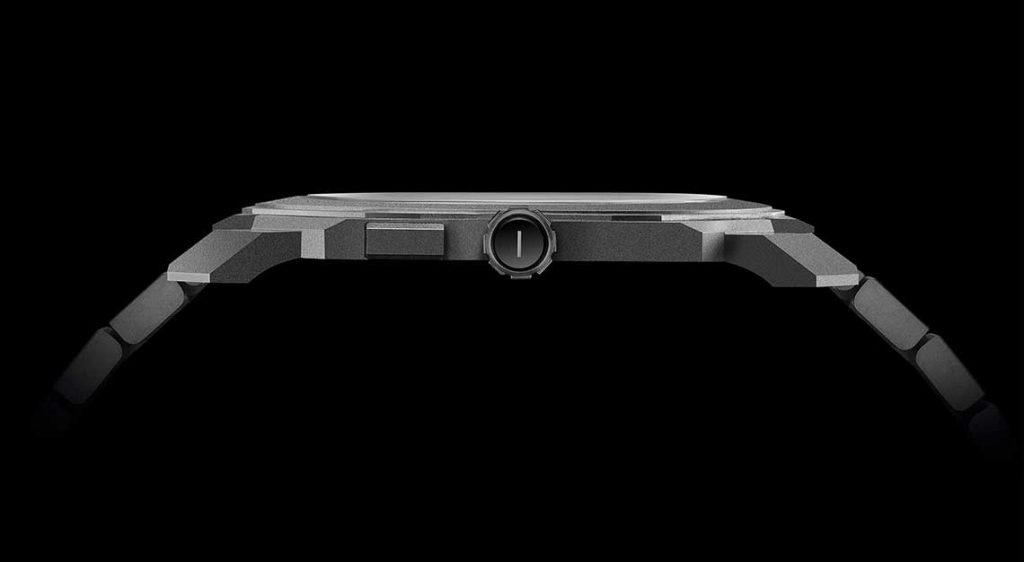
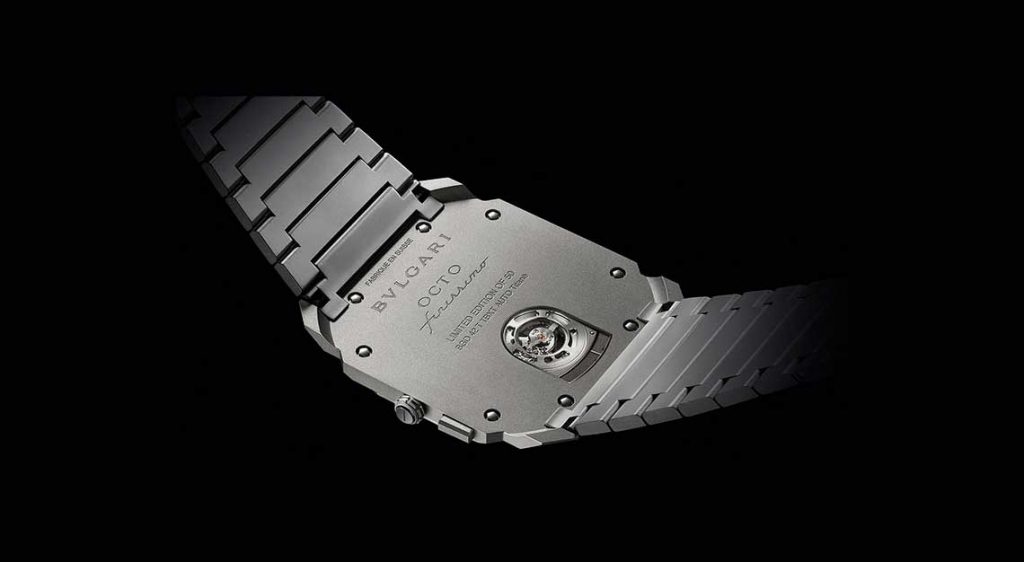
Bulgari Octo Finissimo Tourbillon Automatic
When Piaget unveiled the world’s thinnest automatic watch at SIHH 2018, it was not difficult to imagine Bulgari’s team standing in the wings, rubbing their hands in glee because they already had a masterpiece in the works that would one-up Piaget. That masterpiece was the Octo Finissimo Tourbillon Automatic, revealed two months later at Baselworld 2018. While the title it stole from Piaget was that of the world’s thinnest automatic timepiece, it also set a record of its own – the world’s thinnest tourbillon.
Ticking away within the watch is the paper-thin 1.95mm BVL 288 calibre, which is based on the equally thin BVL 268 that runs the mechanical version of this watch. To transform the manual-wound BVL 268 into the self-wound BVL 288, Bulgari has added a peripheral rotor made of gold and aluminium. The use of two metals with very different densities, and hence, weight, makes the oscillation of the rotor much more regular.
Its peripheral rotor offers an elegant solution for an ultra-thin timepiece. Unlike a full rotor, which is pivoted from the center of the base plate and requires space between the baseplate and the case back to swing, a peripheral rotor is usually C-shaped and rotates around the edge of the movement. Because no space needs to be left between the baseplate and the case back to accommodate the rotor, the thickness of the timepiece can subsequently be reduced. The overall thickness of the watch, including the sandblasted titanium case, is just 3.95mm. It has a diameter of 42mm and a power reserve of 55 hours, and was produced as a 50-piece limited edition offering.
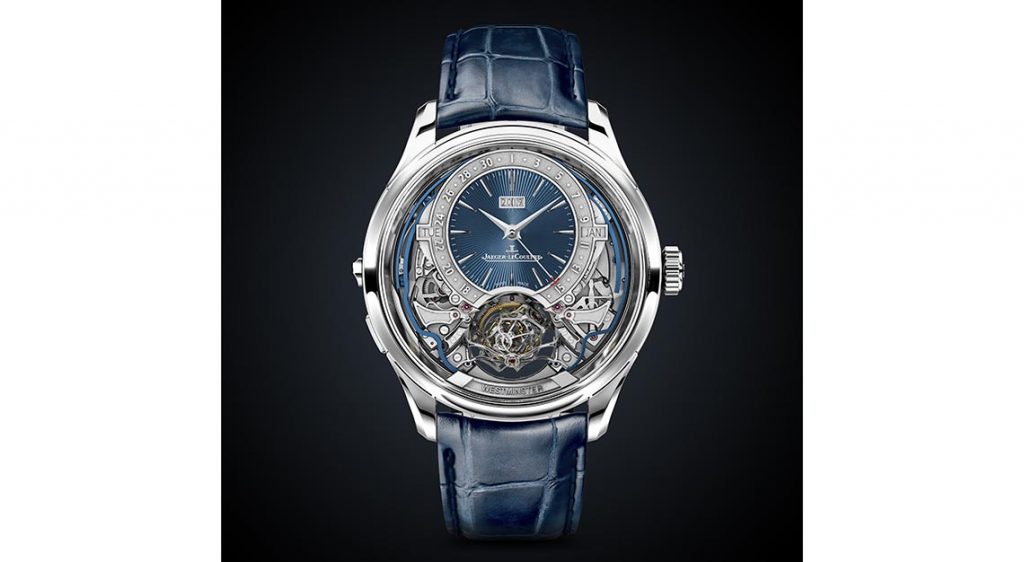
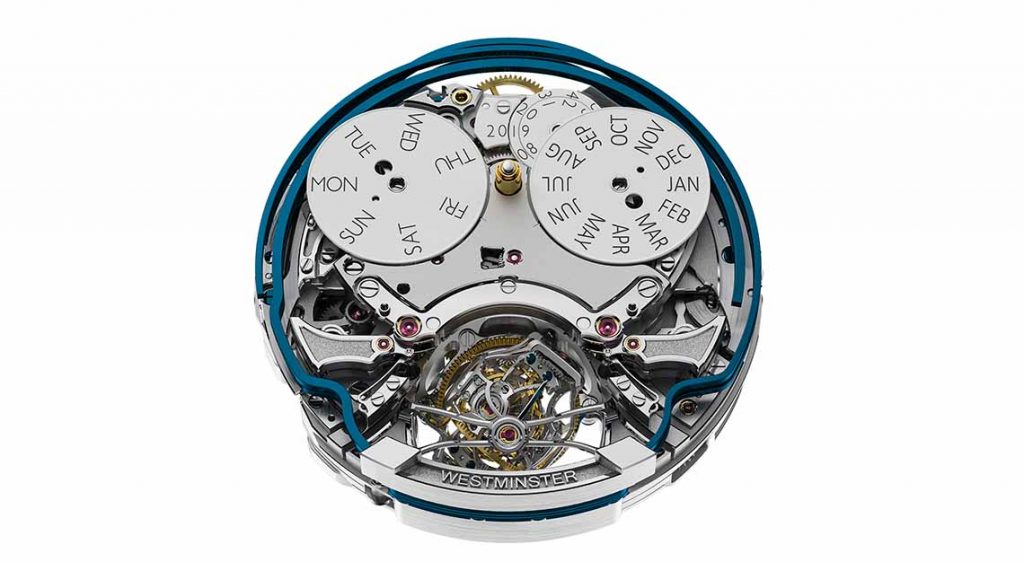
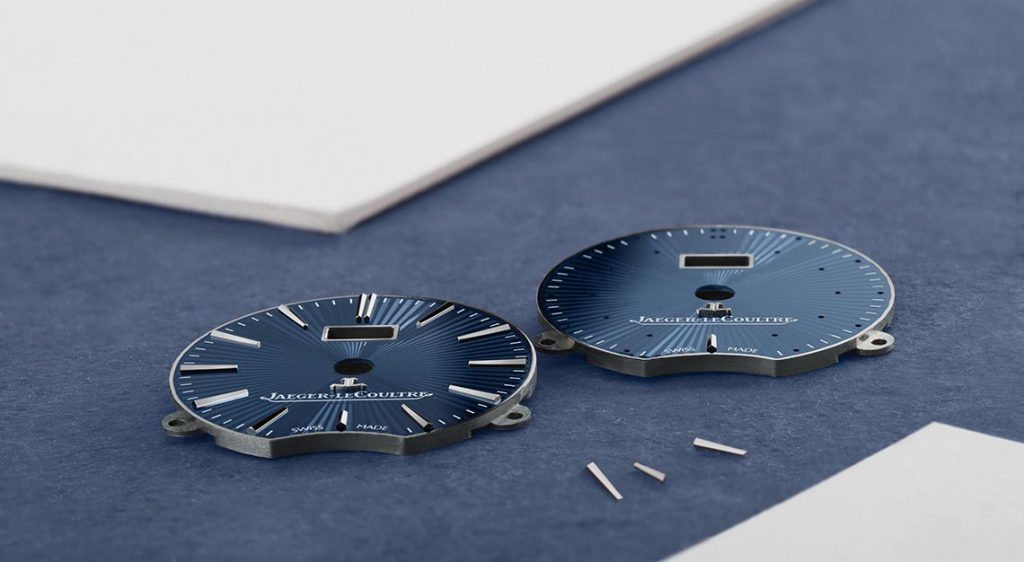
Jaeger-LeCoultre Hybris Mechanica 11
At 7.9mm, this minute repeater by Jaeger-LeCoultre is rather chubby, but it remains the world’s thinnest automatic minute repeater, and manages something none of the other watches on this list has – fitting two complications within its slim case. Besides the minute repeater, the Hybris Mechanica 11 also holds a flying tourbillon. Even with the addition of the tourbillon, the calibre 362 measures only 4.8mm thick.
To achieve this, the tourbillon had to be re-engineered. The fact that it’s a flying one – which means its bridge has been removed – certainly helps in Jaeger-LeCoultre’s quest for thinness. But that’s not all. The balance wheel has been turned over and also has had its bridge removed, so that the hairspring, typically located under the oscillating wheel, is now visible on the dial side. Like Bulgari’s Octo Finissimo Tourbillon Automatic, this timepiece uses a peripheral rotor, observed through the slots cut into the dial between the indexes, which also serve to amplify the sound from the minute repeater.
Because of watch’s reduced dimensions, the control for the minute repeater had also been re-engineered. Instead of the more common slider along the case band, this timepiece has a pusher at 10 o’clock. To deploy it and activate the minute repeater, the wearer has to move the slider located at 8 o’clock, the location of which is marked by a treble clef.
Another notable feature is the chime of the minute repeater. Conventionally, minute repeaters chime the hours, followed by the quarter hours, then the minutes. It is typical then, to experience a pregnant pause between the chime for the hours and the minutes. However, there is no such silence in the Hybris Mechanica 11. The timepiece has a 41mm case in 18k white gold and a power reserve of 45 hours. Only 75 pieces were available worldwide.
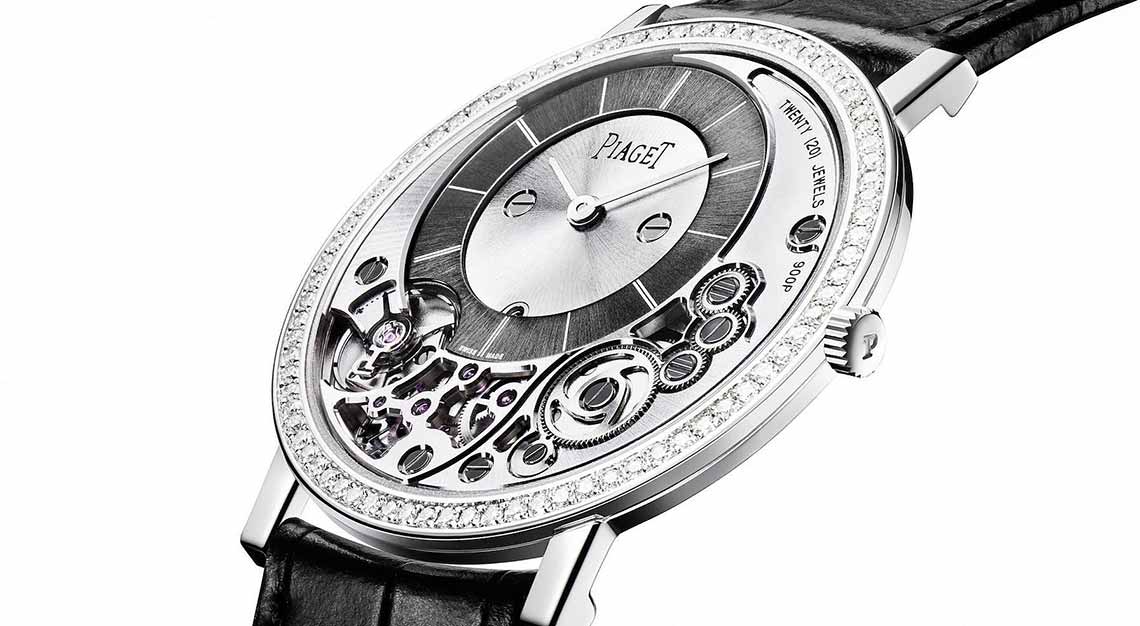
Piaget Altiplano 900P
Last year, Piaget proudly launched the world’s thinnest automatic watch at SIHH only to have its moment of glory rudely cut short two months later by the debut of Bulgari’s slimmer masterpiece at Baselworld 2018. Despite that unceremonious dethronement, however, there’s one record the brand has managed to hold on to since 2013 – making the world’s thinnest hand-wound timepiece, the Altiplano Ultimate 900P.
The secret to its svelte 3.65mm measurement lies in the construction of its manual winding movement. The bezel has been fused with the case, and then the case with the movement, so everything is just movement and sapphire crystal. Most of the components are arranged on a single level plane, as opposed to being layered on top of one another as they would be traditionally. The dial has been made smaller and sits at 10 o’clock, with all 145 parts of the movement laid out around it. This unique arrangement shaves off a few extra millimetres, giving the Piaget Altiplano Ultimate 900P a diameter of 38mm alongside a 48-hour power reserve. It’s available in white gold and rose gold.
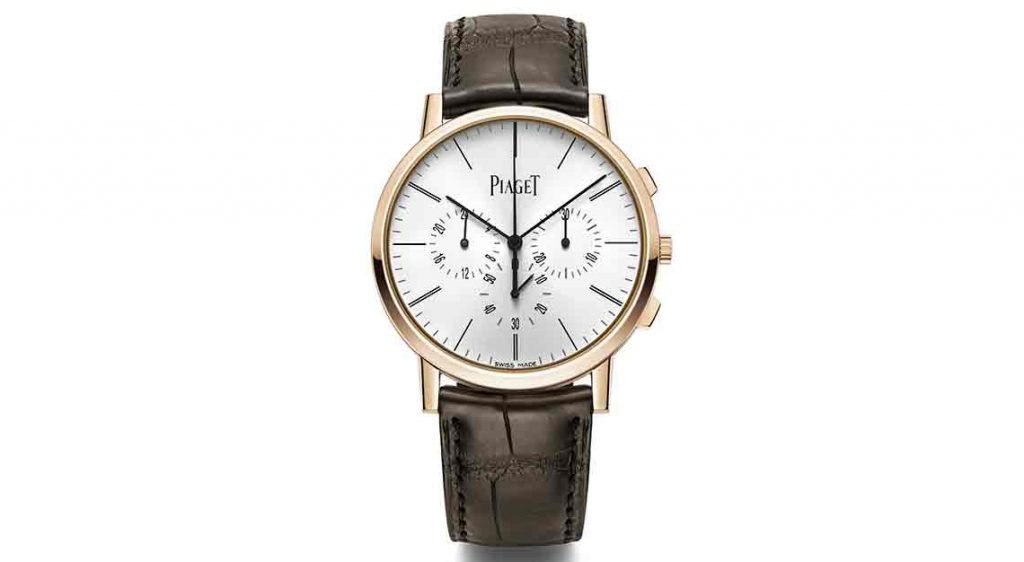
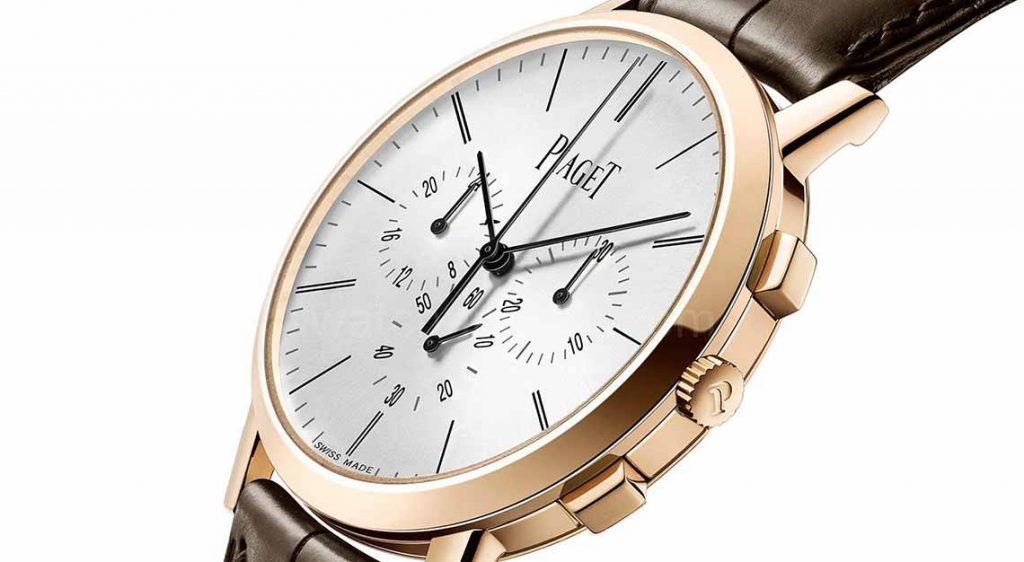
Piaget Altiplano Chronograph
A year after introducing the Altiplano 900P, Piaget debuted the Altiplano Chronograph 41mm timepiece, shown here in 18k rose gold on a brown alligator strap. In keeping with the watchmaker’s impressive history of making ultra-thin movements, the model boasts a total thickness of 8.24mm, with a hand-wound flyback chronograph movement (calibre 883P) that measures just 4.65mm. But don’t let the model’s slender dimensions fool you: in addition to a flyback chronograph function, the movement includes a small seconds and dual time-zone display.
https://www.instagram.com/p/Bio-mJxlm7K/
Piaget Altiplano Ultimate Automatic 910P
With this 4.3mm-thick Altiplano Ultimate Automatic, Piaget managed to once again shave off precious milimetres by affixing 219 components to its caseback. It has also opted for a suspended barrel in this instance, which is held by a single bridge on the dial side, unlike other barrels that are fixed on the mainplate’s side. The 41-mm timepiece sports a black off-centre dial, and has a power reserve of 50 hours. Rose and white gold versions are available.
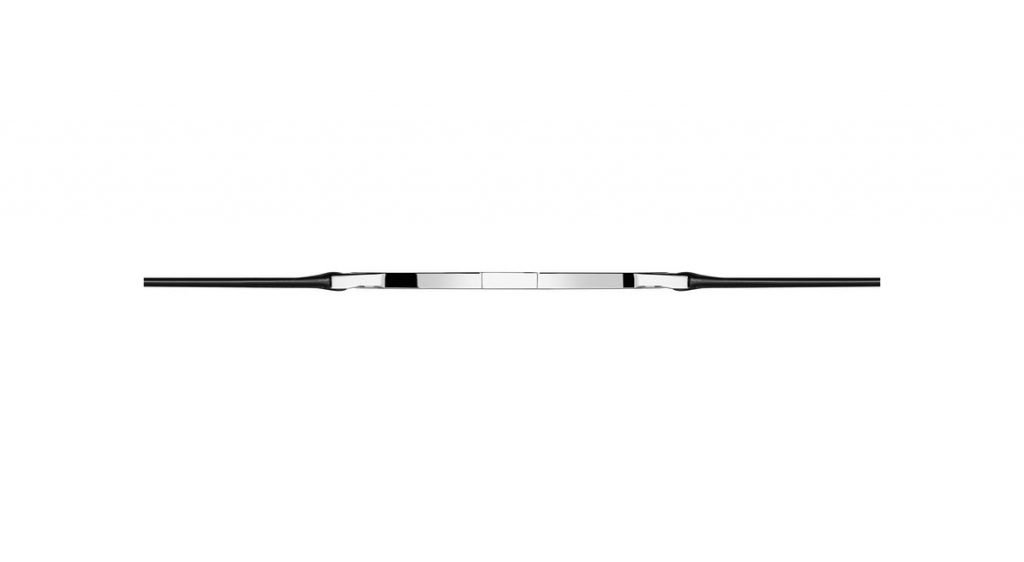
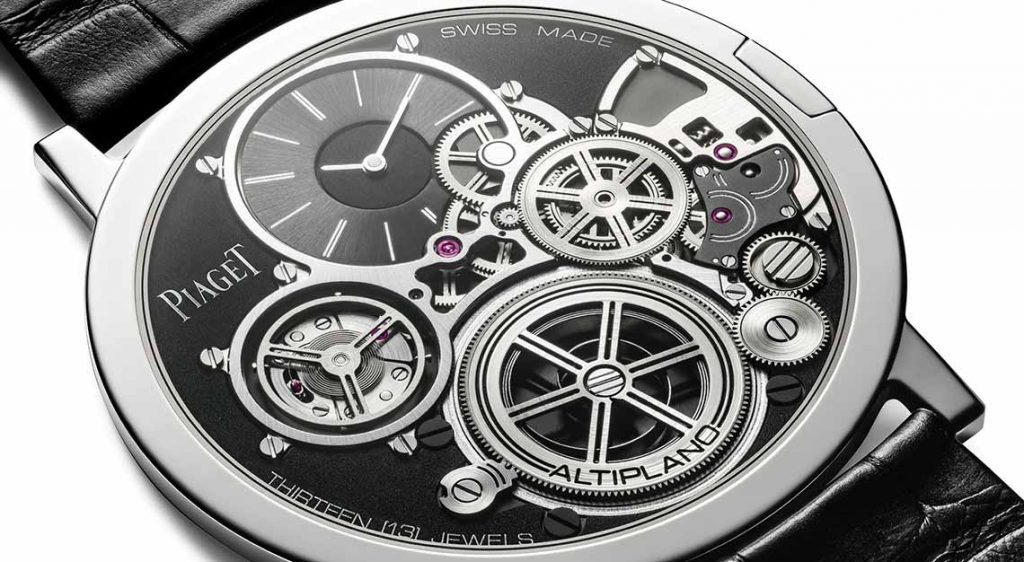
Piaget Altiplano Ultimate Concept
Piaget has always pushed the boundaries of what ultra-thin means, and this time’s no different. First showcased at SIHH 2018, Piaget is currently working on the Altiplano Ultimate Concept which, when launched, will be just 2mm thick. And we’re not just talking about the thickness of the movement. The unbelievably thin 2mm refers to the thickness of the entire watch. Now, that’s something to behold, considering its Altiplano Ultimate Automatic is only 4.3mm thick. There’ll be no balance cock, no shock absorbers and no jewels for balance staff. But what the Altiplano Ultimate Concept watch will have is a 44-hour power reserve and a flat crown that sits flush with the case.
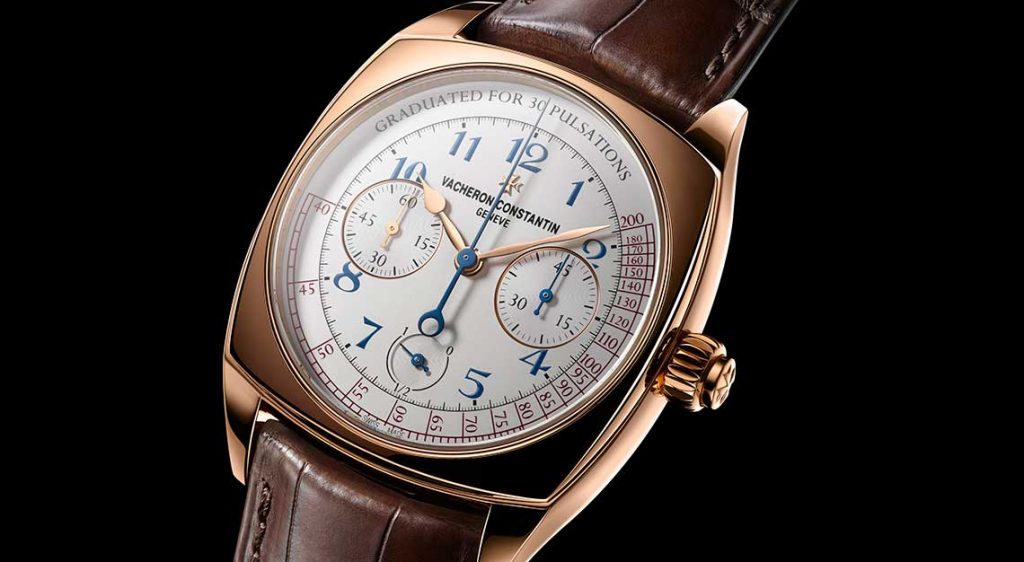
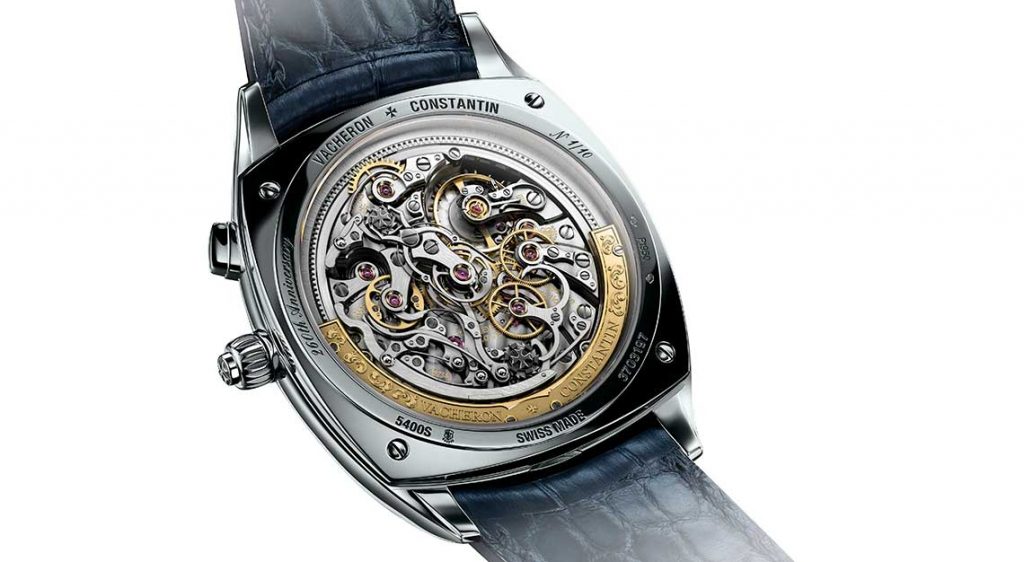
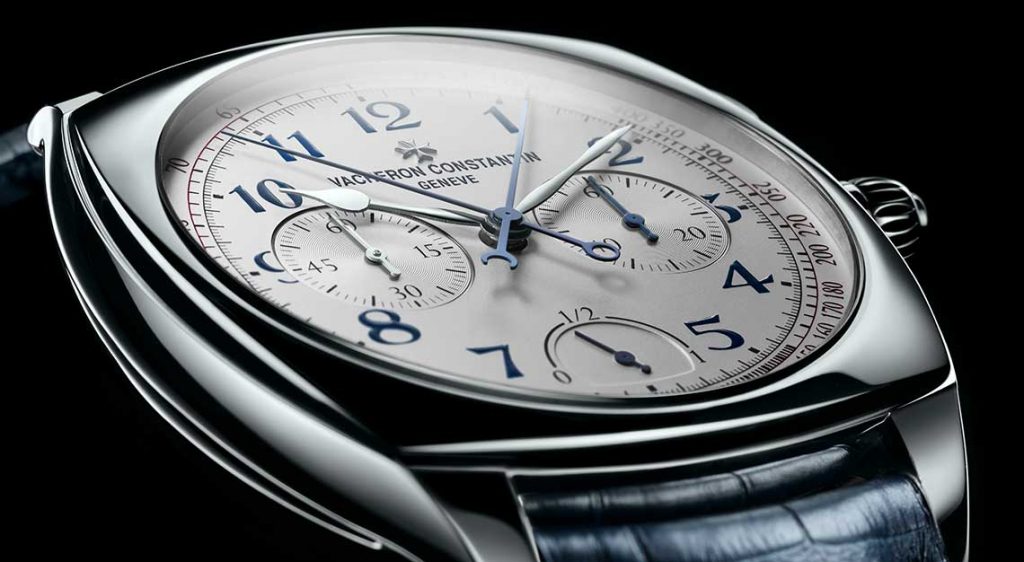
Vacheron Constantin Harmony Ultra-Thin Grande Complication Chronograph
Who says old dogs can’t learn new tricks? The oldest watchmaker in continuous operation, Vacheron Constantin created the Harmony collection of cushion-shaped timepieces in 2015 to mark its 260th anniversary. This included the Harmony Ultra-Thin Grande Complication Chronograph, whose in-house Geneva Hallmark–certified movement stands a mere 5.2mm-tall. The limited-edition model comes in an 8.4mm-thick platinum case and is the thinnest mono-pusher, split-seconds chronograph on the market today.
